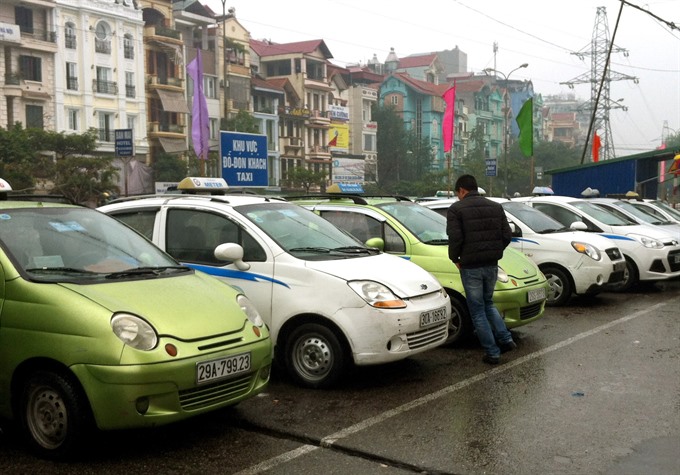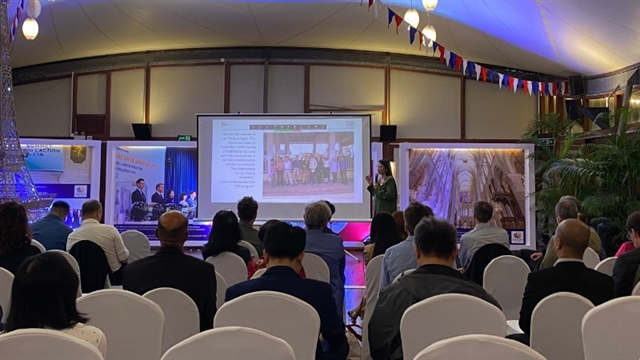 Society
Society

The number of taxis in Việt Nam’s big cities is expected to rise well beyond planned targets or consumer demands, which will exert even more pressure on road infrastructure as well as causing waste, congestion, and environmental pollution.
 |
| A parking lot for taxis in Lương Yên bus station in Hà Nội. — VNA/VNS Photo Hoàng Hùng |
HCM CITY — The number of taxis in Việt Nam’s big cities is expected to rise well beyond planned targets or consumer demands, which will exert even more pressure on road infrastructure as well as causing waste, congestion, and environmental pollution.
According to HCM City’s Department of Transport, currently there are 10,700 taxis operating in the city, up 12.6 per cent against the 2010-15 target. The city expected to have 12,700 taxis by 2020 as per the original taxi development plan, but the 36 taxi operators in the city plan to put out a larger number of taxis in the coming year, which will likely exceed demand.
The southern city’s infrastructure is already struggling to keep up with the ever-swelling number of vehicles. The total length of the city’s roads reached 4,100km, but only 1,700km (or 41 per cent) boast lane width of over seven metres, and another 2,100km (51 per cent) have no pavements or lane width below one metre.
In Hà Nội, there are 17,400 taxis, mostly in the downtown districts, but the city only has 32 parking spots for taxis with total capacity for 200 vehicles.
By complaining that app-based services such as Uber and Grab are eating up their market shares, traditional taxi companies have inadvertently highlighted the fact that many of their taxis are spending a lot of their time cruising to pick up customers.
On an average, a taxi is driven around 200km per shift, and with the current rate of customers, this means that a taxi would be driven passenger-less for nearly 100km, which wastes seven litres of fuel. Multiply this by 17,000 taxis and the total fuel daily wastage is a staggering VNĐ3 billion (US$131,970), not to mention the release of greenhouse gases.
Experts are proposing methods to reduce this wastage and pollution. “Large cities like Hà Nội and HCM City must conduct research into the number of passengers using taxis, private cars and motorbikes for a single journey. The rising number of passenger-less taxis, along with at least 50 per cent of motorbikes carrying only one passenger, are the main reasons for worsening traffic jams,” said Nguyễn Bá Hoàng, vice-rector of HCM City’s University of Transport.
Hoàng recommended that Việt Nam should look at some of the cities in developed countries, which require that cars entering the city via gateways must have at least two to three passengers on board.
Dr Ngô Viết Nam Sơn, an urban transport infrastructure expert, put forth the idea of building exclusive lanes for buses and other public transport, and even private vehicles, but said every vehicle must carry the maximum number of people its design capacity permits.
“Traditional taxi companies can also make use of the app-based approach, thereby proactively reducing passenger-less situations, easing pressure on urban traffic infrastructure, and most of all, making themselves more competitive,” Sơn said. — VNS




